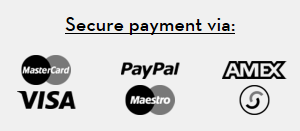
In an ideal world, new websites would be created and existing websites would be migrated without any problems.
Sadly, however, it happens again and again that the website creation/migration process ends with stakeholders complaining that they are not happy with the outcome. Problems can include insuffucient leads, insuffucient conversions, bad reviews or high bounce rates. These can be a result of problems with the website, such as slow loading speeds or confusing navigation and filters – and in order to fix them, higher marketing budgets end up being needed.
Some of the most common failures include beautifully-designed webpages with high quality images which take more than ten seconds to load, CMS templates with auto-generated H1s, and contact forms which block the special characters found in some non-English languages.
In order to fix these problems – or even better, to prevent these problems from occuring in the first place – the design and SEO teams must work together. Unsure how to do this? Don’t worry. This blog post will explain how to combine design and SEO when building an international website.
What makes a good website?
First of all, it is important to understand what makes a successful website. As a starting point, a successful website is a trustworthy website. So, what makes a website thrustworthy?
- engaging content
- responsiveness and speed
- mobile friendliness
- modern design
- security (HTTPS)
- correct and localised spellings
- good quality photos
- correct currencies
- simple navigation
- social share buttons
- reviews and testimonials
The above all fall under UX (user experience) and UI (user interface). When website visitors have a good experience, they are more likely to stay longer, buy/convert, write good reviews and share their experience with friends (thereby creating natural backlinks).
So, how can you improve your UX and UI and how should you measure these?
UX, UI and design tips for creating a good international website
KPIs used to measure UX include mobile friendliness, time spent on-site, bounce rate and page speed. The importance of good UX for SEO has been well-known since the launch of Google‘s RankBrain algorithm in 2015, which tells Google if your website provides a good UX, and gives you higher rankings if you do. User-related KPIs are gaining in importance and should not be missed in any monthly SEO report.
UI refers to all the visual elements which are used by users to interact with your website. Visual elements can be buttons, social share icons and call-to-action banners etc. Neatly-designed UI increases interactions and conversions. Here are some examples of good UI:






Now, let’s look at website speed. As webite speed is one of the most important UX factors, make sure your designers are aware of this and that they bear the following in mind when creating your website or adding new content:
- optimise image and file size (there are many online tools available to crop and resize images like compressor.io)
- use CSS and HTML for image optimisation
- use web fonts (e.g. Arial, Verdana)
- reduce the number of server requests
- use optimised SVGs
- use mobile-first design tools
There are many free online speed tests available (e.g. webpagetest.org, Lighthouse) that allow you to quickly check your website speed.
Behind good UX and UI is a nice design, and therefore design is a trust factor, and thus design is part of SEO.
Now that we’ve seen how design affects SEO, let’s take a look at how SEO affects website design.
SEO tips for creating a good international website
The next challenge is that your website must be found organically in the search engines. SEO helps to improve ranking factors such as keywords, images, mobile friendliness (mobile currently makes up 52% of the market share in the US, and it is projected that there will be 2.9 billion smartphone users in 2020 worldwide), engaging content, content structure, website speed, links, and time spent on-site.
But how can you make sure that your designer takes these into account when creating or adapting your website? Let’s close the gap between SEO and design through teamwork and education, and let’s create a website which performs well, looks amazing and visitors will use! Take the time to have a SEO briefing, make SEO part of the design workflow and keep your design team updated as things move very fast in digital marketing – this is especially important when your design team also works on offline material.
When chosing a CMS, make sure it is SEO-friendly and that it allows you to create unique headlines per URL and create image tags. If you want to create a multilingual website, make sure your languages are supported by the CMS and that your template allows special scripts like those that run from right to left, those with double bytes, those that are much longer than English (like German or Turkish), and that it allows special characters like é, ü, ñ.
Finally, make sure that your international webpages undergo a trust signal audit conducted by native linguists. This is the only way you will detect simple errors such as phone numbers with missing country codes, incorrect shoe sizes and inappropriate payment options.
A few final thoughts
But education does not stop there! Everybody who is involved with creating/editing content on your website needs to be briefed. Often the cause of slow websites are press articles with huge images which were uploaded by the PR department who had no idea about the connection between speed, UX and SERPs.
Make it to your quest to educate all relevant parties, get the design and SEO teams working together, and have at the end a nicely-designed, fast-loading, mobile-friendly website which ranks highly and meets your performance KPIs!







